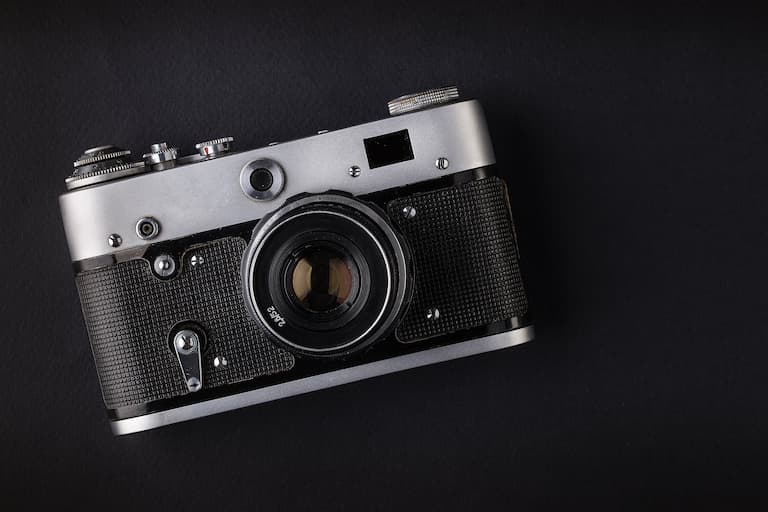There are many options for your camera when it comes to picking a lens. With so many to choose from, it can be difficult to pick the best one for you.
All camera lenses are not universal. While many lenses are interchangeable, not all of them are. It largely depends on both the brand and the type of camera you are using.
In the rest of this article, we will go into greater detail on the interchangeability of camera lenses and how you can choose the right one for you.
Why Aren’t All Camera Lenses Universal?
All camera lenses are not universal due to the unique purposes of different lenses. Your lens choice will vary based on the type of camera you are using and your personal photography goals.
In addition, some lenses are interchangeable, while others are not. It’s important to take note of your particular camera and its compatibility with different lenses before making any changes to your photography setup.
What Are Interchangeable Lenses?
When you buy a DSLR camera, it probably came with a standard lens already attached. If the lens is not fixed to your camera, this means it is an interchangeable lens.
Interchangeable lenses are camera parts that you can remove from the camera body and replace with other lenses. You can remove them by turning the lens either clockwise or counterclockwise. The lens should come off easily.
When removing the lens, be careful not to drop or damage it. We recommend keeping the lens cap fastened to the end of the lens so that you do not scratch the glass.
There are a variety of options when it comes to camera lenses. Different camera brands offer hundreds of different lenses, all geared towards a variety of functions.
You may be wondering what the point is of switching your camera lens. Let me explain.
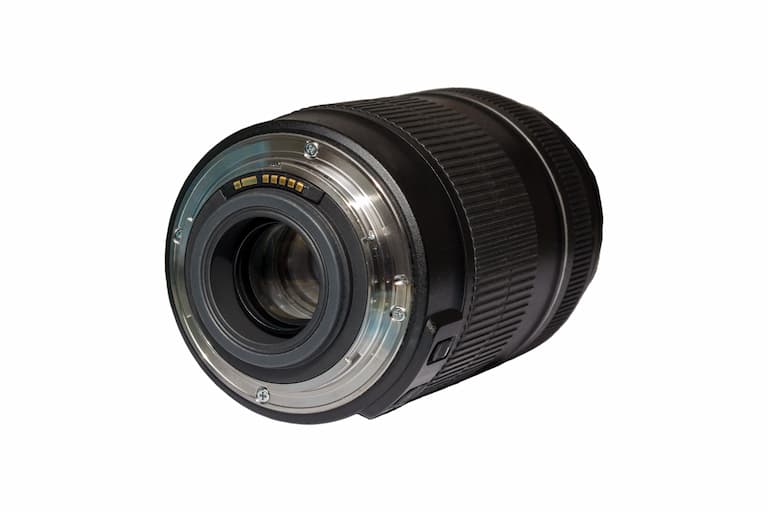
Switch Lenses According to Your Photography Goals
Camera lenses are a great tool for perfecting your photography. Some lenses are better at certain functions than other lenses. When choosing a lens, you have to know what you want in your photography.
Typically, better lenses will give your photos a much higher quality. You can also use various lenses to get different effects. This includes blurring the background, having greater detail, sharpening the photo, and changing the depth and width of the shot, among other things.
It is commonly said that photographers should have these three lenses above all else:
- 50 mm lens: This is the most versatile of all the lenses and is usually the first one any photographer buys. The lens itself allows you to focus on a specific subject while blurring the background. Many affordable versions of this lens exist from various brands.
- Wide-angle optics lens: After the 50 mm (1.96 in) lens, this lens is the next best choice. This one is perfect for landscape photography. It allows you to capture a wide view of your subject while controlling any distortion in the shot.
- Macro lens: Lastly, the macro lens is perfect for capturing detail in a tiny object, such as a flower or a bug. It lets you zoom very close while still maintaining great levels of detail. This lens can range from 60 mm to 100 mm.
In order to get the full range of photo effects, having multiple lenses is important. Still, you have to be careful when purchasing a new lens because lenses are not always interchangeable.
Camera Lens Mounts Vary Between Brands
Camera brands can often have their own specific lens mount. This means that lenses of the same brand of your camera will fit, whereas lenses from other brands will not. Even cameras of the same brand can have different lens mounts, depending on a variety of factors.
For instance, when a new camera comes out, it is possible that the lens mount is a new design. Therefore, old lenses will not fit on the new camera. Also, cameras of different sizes and specificities may have different lens mounts because of their unique function.
A lot of major brands will choose to make cameras with their own specific lens mount. These brands can also control what other companies are able to make lenses that fit their camera. Some smaller companies will have deals with the larger brand that enables them to produce lenses that fit their cameras.
The lenses produced by smaller companies may not be as high quality as the major brands, but they are usually significantly cheaper. Plus, the versatility of their lenses make choosing one a bit more convenient.
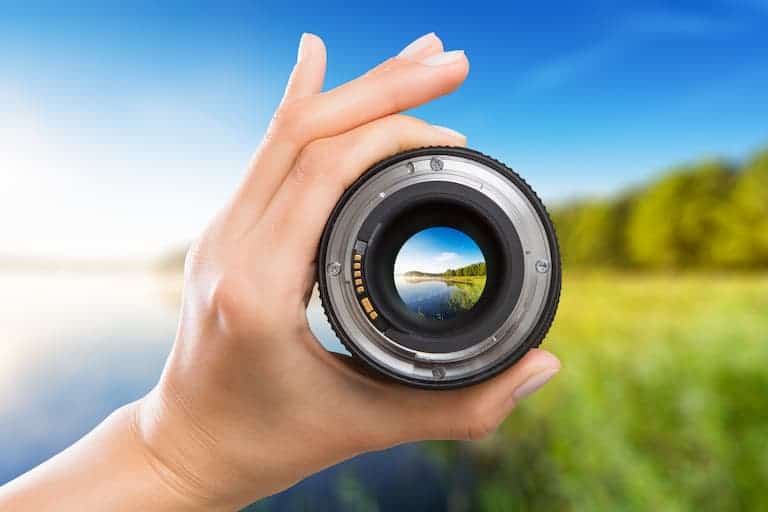
What Are Lens Mounts?
There can sometimes be confusion over what a lens mount is and how it can differ. Let me explain.
Lens mounts are the part of the camera where you attach your lens. It is less like a physical hole and more of an interface where the lens communicates with the camera to do its job.
Different cameras have different lens mounts due to the nature of their function. Therefore, only some lenses are able to be attached to them.
Lens mounts can differ in many ways, including the following:
- Mounting Direction: All camera lenses will either attach clockwise or counterclockwise. While most cameras mount in the clockwise direction, Nikon cameras mount counter-clockwise.
- Throat Size: The throat is the circular hole in the center of your camera where the lens goes. The throat size is the length of that hole’s diameter. Throat size may vary from camera to camera. A lens may not fit if it is too big or too small for the throat size.
- Inner and Outer Diameter: The inner diameter represents the length of the throat from the inside, while the outer diameter is the length of the entire month, including the outer tabs.
- Flange Distance: The flange distance is the distance from the outer part of the lens mount to where the sensor of the camera sits on the inside. This distance can vary widely among different cameras.
Why These Different Measurements Matter
All of these factors together have a very important impact on the functionality of your camera and lens.
A Larger Lens Mount Increases Access to Light
First of all, having a large lens mount compared to a small lens mount allows your camera to access more light. This is great if you struggle with low exposure as a photographer. It also makes a difference in the speed of your shots.
However, having a larger lens mount also makes your camera bigger and heavier.
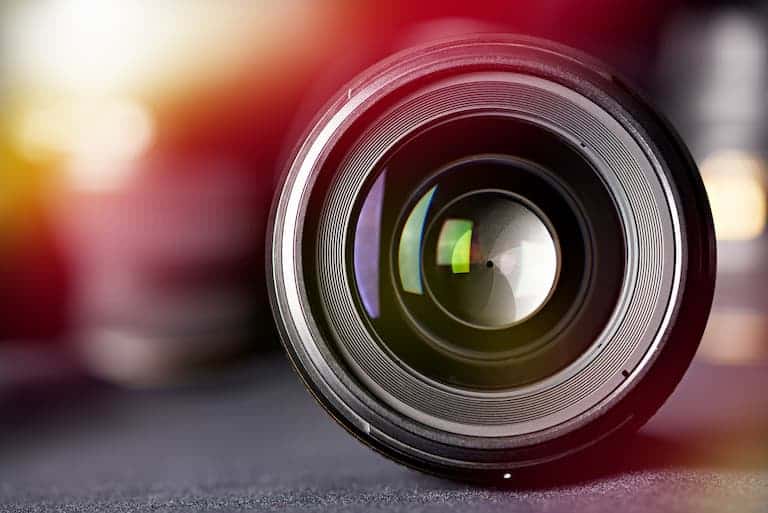
Flange Distance Impacts the Camera’s Size
If the flange distance in your camera is shorter, your camera will be smaller and more compact. It will also be able to autofocus much faster. In general, you will also be able to use simpler lenses on the camera.
Make Decisions According to Your Camera Lens Mount
All the factors that go into the camera lens mount make a difference in what kind of photography the camera is capable of doing and what sorts of lenses it can be attached with.
When choosing a camera or lens, you should look into the measurements of your camera and determine what it is best matched with.
You can use your camera’s measurements to calculate the angle of incidence, which is the angle of the reflection of the camera’s lens compared to the source of light.
These concepts can be a bit difficult to understand, but you should just know that these measurements all contribute to the angle of incidence, which affects the camera’s performance.
Therefore, the way your camera is built has a large effect on the photos you take. The same can be said for the lens that you want to use.
The camera and then lens work together when taking photos. The combination of the two that you use will create a photo that is unique to itself.
Are Nikon, Canon, and Sony Lenses Interchangeable?
Nikon, Canon, and Sony are three major camera companies that all manufacture their own unique lens mount. This is more or less a marketing strategy. Doing this forces you to buy only the lenses of that specific brand.
Nikon, Canon, and Sony lenses are not interchangeable. You cannot attach a Nikon lens onto a Canon DSLR and vice versa due to their unique lens mounts.
The only possible way to use lenses on cameras of different brands is by using a lens mount adaptor. However, lens mount adaptors have some serious drawbacks that you should first consider before doing this.
Different Lens Mounts of Top Camera Brands
Let’s take a look at the different types of lens mounts that some of the top camera brands use.
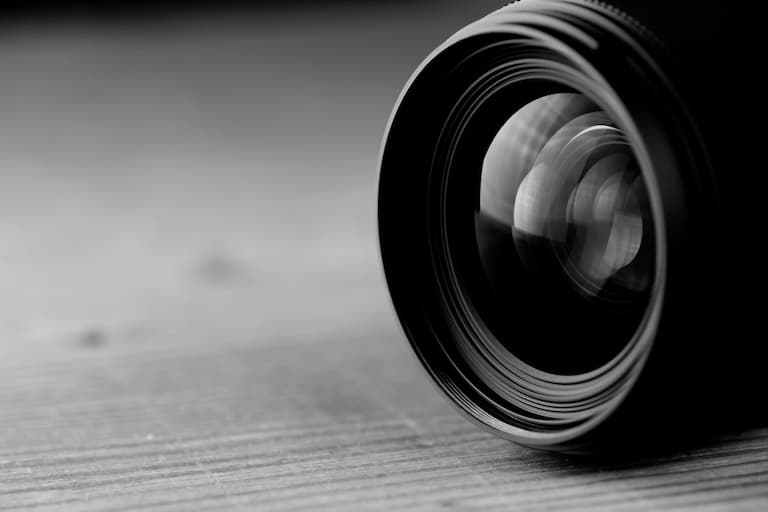
Nikon Uses the F-Mount
Nikon has historically operated widely under the use of the Nikon F-mount, which was actually designed in 1959. However, in 2011, the Nikon 1-mount was released and is used on their compact system cameras.
F-mounts still continue to dominate and act as the bridge between most Nikon DSLRs and Nikon lenses.
Canon Uses Four Unique Lens Mounts
Canon has four common lens types. The standard lens of Canon cameras is the EF lens mount, which stands for “Electro Focus.” This means that the lens has the ability to autofocus.
The three varying types are the following: EF, EF-S, EF-M. The fourth lens mount is the RF mount.
Some of these lens mounts are compatible with the same type of lens. Canon has created a simple guide on their website to help you determine what lens will work in what situation.
Sony Manufactures Two Lens Mount Styles
Sony has two lens mount styles—the A-mount and the E-mount. The A-mount is commonly used on Sony cameras with translucent mirrors, while the E-mount is used on cameras that have mirrorless bodies.
Be sure to take note of your camera type when shopping for Sony lenses.
Other Camera Companies Often Share Lens Mounts
Smaller camera companies commonly create lens mounts that are the same as these larger companies.
For example, the brands Sigma, Tamron, and Tokina make cameras compatible with the EF and EF-S mounts.
Alternatively, the brands Kodak, Panasonic, and Olympus use a specific lens mount called the Micro Four Thirds mounts.
However, smaller brands can also have their own lens mounts, too. You shouldn’t assume that anything will fit. Make sure you look into exactly what lens mount your camera has so that you can find a lens that fits.
DSLRs Differ From Compact System Cameras
When buying a camera, you have the option of either a DSLR or a compact system camera.
DSLRs are used in professional photography and allow you to manually change a lot of the settings to get your perfect shot. You can control aperture, shutter speed, white balance, and ISO levels while also maintaining enhanced details in the photos.
On the other hand, compact system cameras are both smaller and a lot easier to use. Also, there have been some recent compact system cameras that are capable of reaching the same quality photos that some DSLRs do. You may decide to purchase one instead of a DSLR simply for ease of use.
Can You Change the Lens on Compact System Cameras?
DSLRs are convenient for many different types of photography, due to their manual settings and the ability to switch between lenses.
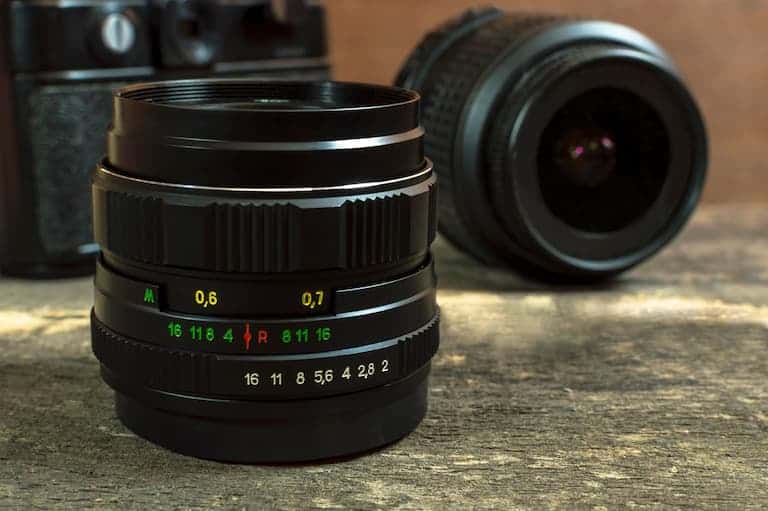
You can change the lens on compact system cameras. These cameras will generally have their own specific lenses that can be used on them. Using the proper lenses for your camera, you can interchange the lens freely.
The range of options for compact system camera lenses is smaller than for DSLRs. Despite this, the range of options for your photography significantly grows if you buy a compact system camera that allows interchangeable lenses.
If you want a camera that is smaller and easier to use but also allows the option to switch between lenses, the compact system camera might be for you.
Will DSLR Lenses Fit on a Compact System Camera?
The ability to use different lenses on your compact camera opens up a whole array of photography options. If you already have DSLR lenses, you may be wondering if they will fit on your compact camera.
Most DSLR lenses will not fit on compact system cameras. Brands that create compact systems cameras tend to make a variety of lenses specific to their camera models.
Before you buy a lens for your compact system camera, you should check the lens mount type and refer to the company in order to determine which lenses are compatible with it.
Some companies do create lens mount adaptors that you can use on a compact system camera and DSLR lenses. However, these adaptors can have some negative drawbacks that you should look into.
Lens Mount Adaptors Allow You To Switch Lens
You may end up in a situation where you have a DSLR and you want to use a lens that doesn’t fit directly onto it. In this case, you can purchase a lens mount adaptor.
Lens mount adaptors act as the bridge between the camera and the lens. They enable you to use different brands of cameras and lenses together. However, there are some drawbacks to using one that you might want to take into consideration.
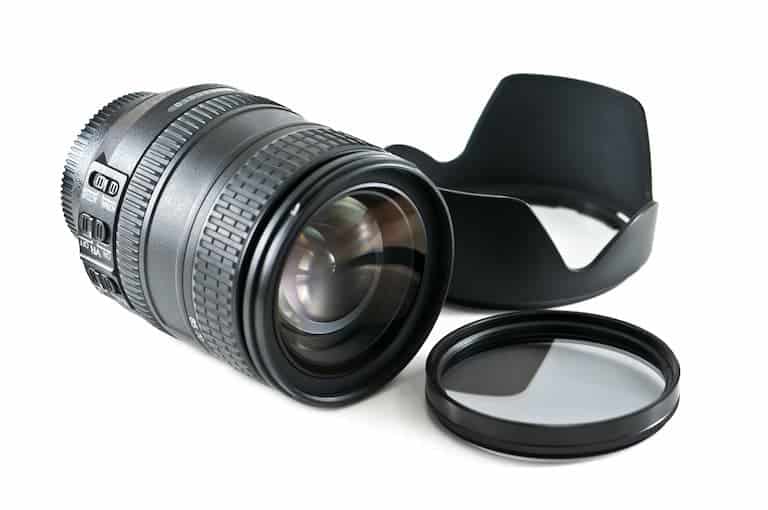
Drawbacks of Lens Mount Adaptors
Here are are a few of the potential problems you may run into if you use a lens mount adaptor to connect a camera with a lens:
- Autofocus does not work.
- Manual focus is difficult to use.
- No focus confirmation.
- Automatic aperture control does not work.
- Vibration reduction does not work.
- Metering is improperly aligned.
- No available EXIF info regarding the lens.
Because of these drawbacks, many choose to forgo the lens mount adapter and simply stick to their camera brand. If they don’t, a lot of the convenient automatic settings do not work.
Choosing the Best Lens Mount Adapter for You
If you do choose to use a lens adapter, you should make sure you get the best one for your situation.
Because lens mount adaptors already have so many drawbacks, you should get a high-quality one that will work well and not cause any unnecessary problems with your camera.
Stay away from low-quality lens mount adaptors, if you can help it. Although they are more affordable, they are certainly not worth the drawbacks they give.
Low-quality lens mount adaptors can actually hurt your camera. If not attached correctly, your lens may fall off. They also sometimes can rub against the attachment mount and drop pieces of cheap metal into your camera.
Here is a list of some of the higher quality lens mount adaptors for Canon, Nikon, and Sony:
- Alison EF/EF-S Lens: Allows you to put a Canon EF Series Lens on a Sony E-Mount Cameras.
- Sigma MC-11: Allows you to attach most Canon lenses onto Sony E cameras.
- Complete CM-ENF-E1 Pro: Allows you to attach a Nikon F lens onto Sony E cameras.
Keep in mind that even with the Canon, Nikon, and Sony brands, lenses are still not always universal. You will sometimes have to use a lens mount adaptor when attaching a Canon lens to a Canon body, depending on the type of lens and camera. This goes for all camera brands.
How To Determine What Lens Mount Your Camera Has
It’s essential that you figure out your camera’s specific lens mount so that you can purchase a lens that will work with your camera.
Since most brands have different lens mounts, you will need to refer to their specific directions. Most companies have an online manual that you can check. These will give you instructions on how to figure out the specific lens mount type of your camera. It will also usually give you a list of lenses that are compatible.
You can also look up the information about the lens that is already on your camera. Since you already know it fits, the lens mount that it is compatible with should tell you the lens mount of your camera.
DSLR Interchangeable Lens Guide
If you’re looking into swapping out your lens, it is probably because you want to diversify your photography abilities.
With hundreds of lenses to choose from, it can be difficult to narrow down the best one for you. We will break down the different categories to make choosing a lens a bit easier.
There are six main categories for camera lenses:
- Standard or regular zoom lens
- Wide-angle lens
- Macro lens
- Prime lens
- Telephoto zoom lens
- Specialty lenses
Below, we will further explain each of these lens types and their uses.
Standard or Regular Zoom Lens
This is the normal lens that your camera probably came with. However, there are many upgrades available for a standard lens that can drastically improve your photo quality while maintaining other good qualities of the standard lens.
While there are standard lenses available at every price tag, an upgrade to a higher-quality lens may cost upwards of $500.
Wide-Angle Lens
Wide-angle lenses allow you to capture wide shots. These are perfect for landscape photography. The zoom range for these lenses usually goes between 10-24 mm.
You can purchase a wide-angle lens at basically any budget. They can go from $100 to $2,000. However, if landscape photography is your passion, We definitely recommend going for a higher-quality wide-angle lens. This will make a huge difference in the quality of your photos.
Macro Lens
Macro lenses have the ability to get up-close, high-quality photos of your subject. Photographers will usually invest in one of these because they are great for capturing minuscule details that are easily left out of an ordinary shot.
Macro lenses are great for taking portraits as well.
You can purchase a macro lens anywhere from $300 to $1,500.
Prime Lens
Prime lenses are very interesting because although they don’t have a zoom range, they are known to take some of the fastest, highest-quality photos.
If you don’t mind repositioning yourself to get the perfect shot, you might be interested in using a prime lens. However, prime lenses can be pricey, going for upwards of $400.
Telephoto Zoom Lens
The telephoto zoom lens has a zoom range of 70-300 mm, allowing you to zoom much farther in on your subjects than you would be able to with a standard zoom lens.
These lenses are great for nature photography. You can take an image from far away while still capturing the subject with great details.
Telephoto zoom lenses can be expensive, but they are good at what they do. A high-quality one can go for over $2,000.
Specialty Lenses
Specialty lenses are created to give your photos a special effect. A common example of this is the fisheye effect, which distorts the photo so that it’s like you’re looking through a bubble.
There are all kinds of specialty lenses that can give your photos a unique look. They come in every price range.
Conclusion
Not all camera lenses are universal. Oftentimes, brands will make lenses that fit solely on their own camera lens mounts.
However, switching your lens can give your photos a new look and seriously upgrade your photography skills. You may choose to buy a new lens that fits your camera or use a lens adaptor to connect them.
Either way, you should look into all the lens possibilities and explore the many features they offer so that you can get your perfect shot.

